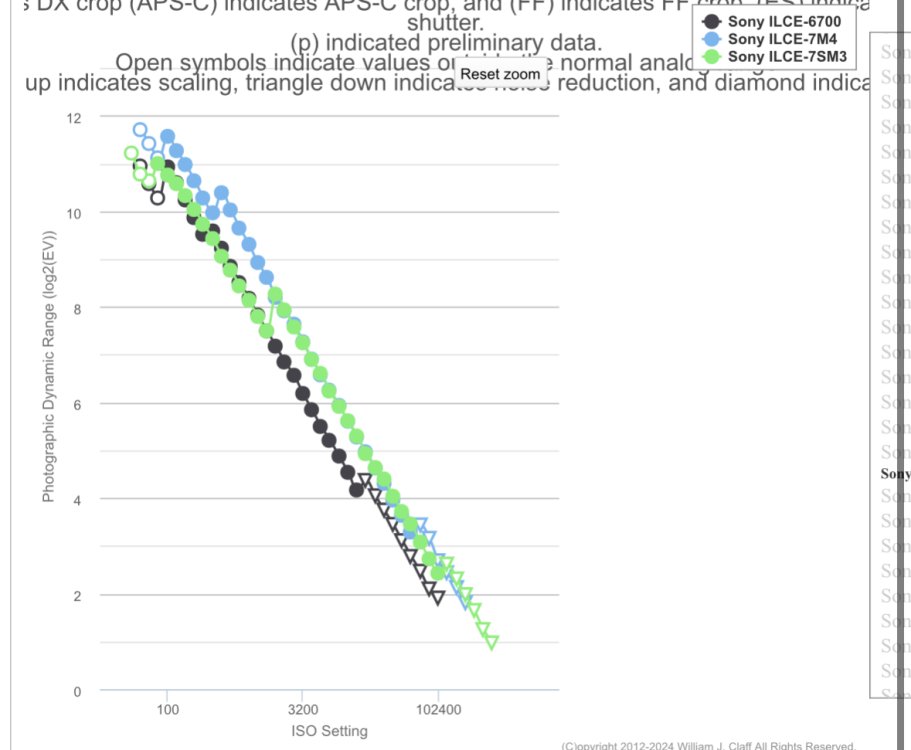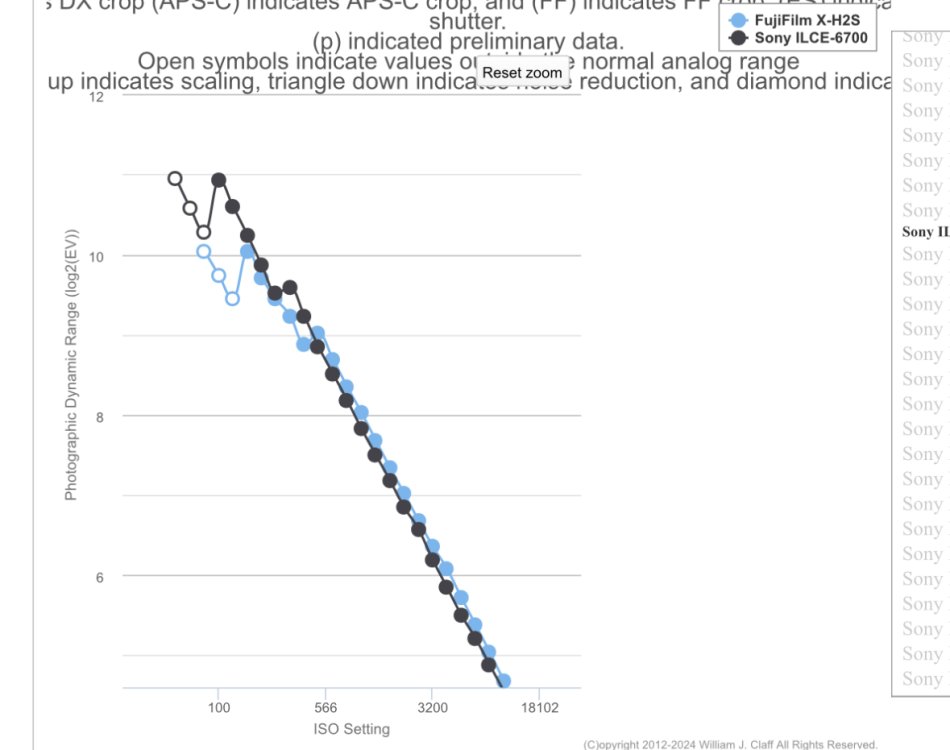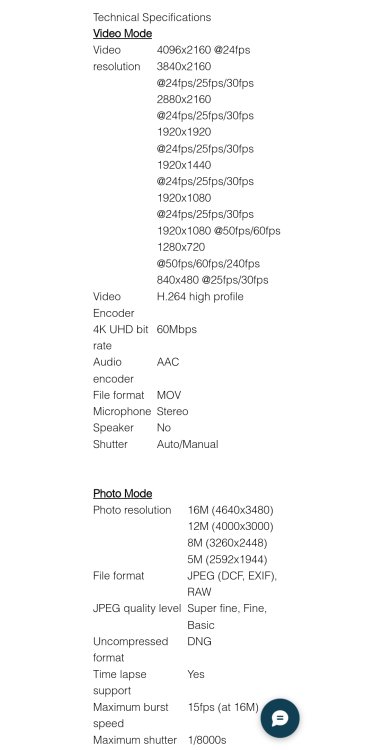-
Posts
2,498 -
Joined
-
Last visited
Content Type
Profiles
Forums
Articles
Posts posted by sanveer
-
-
This is hilarious. Some Moral High Ground Fable was Woven by some guy named Gerald, whose sulking cause he didn't get invited to a launch party, and people have started bashing the whole world. This is ludicrous. If he doesn't get invited to the Academy Awards next year, he'll probably have an absolute meltdown.
-
Who even trusts these reviewers.
-
2 hours ago, ac6000cw said:
From the specs on the Panasonic UK website:
Whoa. This is pretty terrible 😕
Thanks for sharing this.
-
-
In wonder if the Snapdragon X processor laptops will be good for productivity. Sone laptops makers including Microsoft seem to compare them with the M3 chip laptops.
If they are truly that good, good riddance to enormously heavy laptops with terrible battery, and plug-in dependant performance.
-
Panasonic should have put something like the 61MP Sony sensor inside, with a slightly wider lens to create the street photography monster that can compete with Fujifilm.
-
Apparently the 50GPU is going to being far more drastic improvements. Maybe you could make do with a 30GPU and then directly move to the 50GPU when it releases later this'll year.
-
Apparently this is very popular among people who are into paranormal activities and looking to recording on-field audio
-
Fuji X-H2S
In: Cameras
I was thinking of using the Fuji X-H2S for a small project but I saw some video regarding IR pollution. Has anyone else encountered it?
-
11 hours ago, SRV1981 said:
Sarcasm?
It actually seems on the mid or lower scale for a video shooting APS-C sensor. It's a little disappointing especially considering it's immense popularity. Though its prick point is pretty low, which is due to It's missing hardware features like EVF. Probably doesn't have any water or dust resistance (?). The Panasonic G9ii has about half a stop better dynamic range and way more features including some amazing anamorphic modes, good weather sealing, HHHR etc. It's more expensive but it has a lot more features.
8 hours ago, kye said:For example the iPhone 15 tests as having 13.4 stops of DR, but the latitude test shows that it only has 5 stops of latitude, whereas the a6700 has 8 stops, yet only tests as 11.4 stops of DR.
There may be a small series of glitches with the dynamic range test chart. It cannot make out the difference between overbaked images and actual dynamic range very clearly. All smartphone images are way too processed. And the excessive noise reduction and over-sharpening seems to make the image very limited for post work. Apple has clearly figured out to fake results on the test chart. Much like some smartphone companies having higher results on the SoC testing apps.
The difference between total visible stop at SNR 1 and usable ones at SNR 2 seem to suggest good headroom, especially when codec is high bitrate and with good bit depth (atleast 10-bit 4-2-2?). Then SNR 1 and SNR 2 are similar it's difficult tonsee whether the image is way too baked in to recover any more than the visible image shows.
-
4 minutes ago, SRV1981 said:
https://www.cined.com/sony-a6700-lab-test-rolling-shutter-dynamic-range-and-latitude/
11.2 stops at SNR of 2. Which is probably not really good.
-
Is it true that the FX30 has worse dynamic range than the G9ii and X-H2S?
-
Long ago there was a discussion here (and many other places online), about 4k 4-2-0 being converted to 1080p 4-4-4 (or maybe even 4-2-2 if that sounds more reasonable?).
I guess with the various upressing software available, increasing resolution from 1080p to 4k, and increasing bit depth too, a little downscaling (from 4k to 1080p) and increasing bit depth (from 4-2-0 to 4-4-4 or 4-2-2?), and then upressing to 4k from 1080p may work well. Especially if the shadows aren't too noisy and highlights aren't blown out.
P.S.: Didn't realise the thread was started by the luminary of photography and videography 😉
-
2 hours ago, eatstoomuchjam said:
I'm going to go on a limb and guess the micro 4k g2 has no IBIS. There are a lot of 4K cameras without IBIS that don't overheat. A number of people have used Z Cams in all-day shoots in similar or worse conditions and said that while other components (storage, monitor) were failing, the camera just kept ticking along (even at 6K). Once IBIS is introduced, sensor cooling gets a lot harder - it's pretty tough to attach a heat sink to a thing that is suspended by magnets. 😃
Sonys were overheating well before IBIS became a thing 🤣🤣🤣
Also the kind of Card used, sensor and body size, heatsinks used, processors used, body type etc should decide how much a camera overheats. Some Canons have improved heat management after firmware updates.
-
2 hours ago, kye said:
Indeed.
It's a pity that reality doesn't fit in a sound-byte.
Couldn't agree more. The average attention span nowadays is like 2 minutes or less. If one's attentions isn't drawn within that time, people leave.
-
If one isn't able to articulate something in a short version of things, chances are, people will look away.
-
2 hours ago, eatstoomuchjam said:
I'm not sure if it was brought up before in this thread, but apparently Yaroslav got some new old stock of the Z Cam E1.
https://www.soltyscameras.com/product-page/z-cam-e1
I really didn't like mine at all when I had it (and I was so pleasantly surprised by the E2), but as far as I know, it is still the smallest 4K ILC camera ever produced. If you do get, avoid the log profile.Interestingly, it appears to have a 16MP sensor, which appears similar ( or identical?) to the one on the GX85 and a host of other Panasonic ILCs. Do you think the GX85 sensor can also do 720p @ 120 fps and other frame rates, but didn't due to process and other limitations?
Don't go by the mentioned bitrates, because they may be solely on ZCam E1.
-
Just now, sanveer said:
The countdown timer is epic 🤣🤣🤣
I feel Insiders in Panasonic, Nikon, Toshiba, Minolta, Blackmagic and others must anonymously disclose the patent abuses in the Market, so that they can be addressed and fixed.
Countries need to limit patent validities based upon industries, and also Safeguard Against Licence Abuses. If the EU can force smartphone companies to use USB-C chargers only (for some environmental reasons), come down upon Astrazenica for medicial patents etc, they should also prevent patent abuses in Hardware and Software, that pusy back industries and stifle fair competition. Only things regarding medical emergencies shouldn't only invite parliamentary interventions and remedies. Monopolistic and market and IP abuses should also imvite interventions.
-
8 minutes ago, EspenB said:
Patents expire after 20 years.
The basic "internal compressed RAW" patent expires in april 2028. Or the end of the same year, I'm not sure.
In any case "the patent" only has four years to go.
The countdown timer is epic 🤣🤣🤣
I feel Insiders in Panasonic, Nikon, Minolta, Blackmagic and others must anonymously disclose the patent abuses in the Market, so that they can be addressed and fixed.
Countries need to limit patent validities based upon industries, and also Safeguard Against Licence Abuses. If the EU can force smartphone companies to use USB-C chargers only (for some environmental reasons), come down upon Astrazenica for medicial patents etc, they should also prevent patent abuses in Hardware and Software, that pusy back industries and stifle fair competition. Only things regarding medical emergencies shouldn't only invite parliamentary interventions and remedies. Monopolistic and market and IP abuses should also imvite interventions.
-
56 minutes ago, John Matthews said:
This is actually a great point. Maybe Nikon hopes to have more leverage in sensor negotiations with Sony or anyone else.
I also read that Sony was fabbing their new sensors at TSMC, so its most likely a matter of patents, and not so much anything else.
These kind of monopolies, in general are bad. I suspect that they are among the reasons for the downfall of many companies that rely on such sensor makers, who restrict patent use (remember the debate, for the longest, that suspected that Panasonic was restricted in its access to PDAF, since it made video powehouses, and that's why we had the terrible Depth-from-Defocus (DFD), for the longest).
- IronFilm and John Matthews
-
 2
2
-
A few years ago, Nikon was talking about a 1inch sensor they developed which was absolutely class leading. Wat above and beyond anything else in the 1inch sensor space, and better than many FullFrame sensors. And then, like the mythical Organic Sensor of Panasonic, it vanished into thin air.
Sony seems to be the RED of the Image Sensor world. I am guessing they have way too many patents regarding sensors, and they and a few others prevent anyone else from creating something absolutely crazy.
I mentioned this, because its curious how such promising sensors, that should be in modern cinema cameras, never really come to fruition. RED has been bullying the industry on RAW video, and a few others on sensor and hardware development?
-
I believe the issue with RED was that many of their high end cameras weren't as reliable as their Sony and Arri counterparts. That's probably one reason for them not absolutely dominating the market despite their early entry. That along with exaggerated figures on dynamic range, shady proprietary hardware including storage which wasn't proprietary, and some other rubbish which made them almost seem shady to many.
Nikon started early with video on a DSLR, and also 4K, but they didn't really pursue the cinema dream. Most of their video efforts seemed half hearted, and they didn't seem interested in creating some seriously competitive cinema cameras, unlike Canon which has explored it in many different ways. Also, Sony has been slowpy eating into almost everyone else markets, from consumer, to prosumer and then the high end cinema market. Nikon has probably wanting to be part of the cinema market (hybrids as well as true cinema cameras), and that's why they got Pico RAW video, among some other cinema features. Though they never really created anything that sedmed like a cinema camera.
RED has provided it ammunition to harass all competition, based on RED's shady patent, and they can go on a kicking rampage while the patent lasts. By which time, hopefully Nikon does make a few worthy Hybrids, and some real cinema cameras.
RED will have better supply chair, much better reliability, faster abd better customer care, superb autofocus, and improved hardware too. Plus they could get great mainstream sensors at much lesser.
The only thing worth buying in RED is its Illegal right to prevent the competition from having compressed RAW. I wonder if that's enough for Nikon to buy it, unless it was sold at a throwaway price.
-
2 hours ago, mercer said:
I'm sure I'm in the minority here, but I could not care less about Red's patent. It held up in court and I am a firm believer in intellectual property so whatever. And I don't believe raw video is for most videographers, so I don't see the point of it being in most cameras. But again, whatever.
Unless it had the original Cinema DNG ratios that Blackmagic Cameras had (3:1 5:1 8:1 12:1). Despite the huge compressions, those should still be superior to H.264 and H.265 based codecs.
-
Wonder if it would make Nikon create super affordable filmmaking cameras, Not Branded as Red 😉








cinepi 2 super 8 4k raw is disrupting
In: Cameras
Posted
"Dialing in the color science and optimizing the dynamic range on the sensor is still very much a process we are dialing in. There are two modes for the sensor, one is 12-bit and the other is a 16-bit ClearHDR as Sony calls it, which is Dual Gain Output ( like Arri sensors / fairchild sensors used in Blackmagic ) it's this mode that has quite a bit of configurability and some further tuning. Most of the footage shown in this video is from the standard 12-bit mode."
Wow. Sounds quite promising. Would love to see some footage from the 16-bit video. I am guessing it may have impressive exposure latitude. The video in this clip has crushed blacks and blown out highlights. So adding a stop or 2 more may be a welcome change.